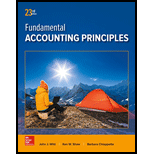
1)
Introduction:
Ratio Analysis
• Ratio analysis is a study of several key metrics of a company based on the data presented in its’ financial statements with an objective to evaluate the financial health of a company.
• It is essential for investors, stakeholders, government bodies etc. to evaluate the key metrics of an entity in order to ensure that the company fulfills the going concern principle and displays financial stability.
The key metrics mentioned above include the following:
•
• Current assets are assets that are convertible to cash within a period of one year or less. Current liabilities are liabilities that need to be discharged within a period of one year or less.
• Net Profit Margin – It is a measure of the total Profit earned from sales after deduction of operating expenses, selling and distribution expenses and other indirect costs.
• It is often the most sought after financial measure to evaluate profitability since it gives a clear indication of the
• Total Asset Turnover – A measure of the correlation between the Total assets employed and the turnover of the business.
• It seeks to evaluate the volume of sales in relation to the assets employed. It gives an indication of the sales in relation to the investment made in the assets and overall capital contribution to the company in the form of Assets.
To Calculate:
a) Current Ratio,
b) Net Profit Margin and,
c) Sales to Assets Ratio in Dollar and Yen
2)
Introduction:
Ratio Analysis
• Ratio analysis is a study of several key metrics of a company based on the data presented in its’ financial statements with an objective to evaluate the financial health of a company.
• It is essential for investors, stakeholders, government bodies etc. to evaluate the key metrics of an entity in order to ensure that the company fulfills the going concern principle and displays financial stability.
The key metrics mentioned above include the following:
• Current Ratio – It is a measure of the relation between the current assets and current liabilities and seeks to measure the ability of the business to fulfill its short term obligations.
• Current assets are assets that are convertible to cash within a period of one year or less. Current liabilities are liabilities that need to be discharged within a period of one year or less.
• Net Profit Margin – It is a measure of the total Profit earned from sales after deduction of operating expenses, selling and distribution expenses and other indirect costs.
• It is often the most sought after financial measure to evaluate profitability since it gives a clear indication of the Profit / Loss of the company at the end of the reporting period.
• Total Asset Turnover – A measure of the correlation between the Total assets employed and the turnover of the business.
• It seeks to evaluate the volume of sales in relation to the assets employed. It gives an indication of the sales in relation to the investment made in the assets and overall capital contribution to the company in the form of Assets.
To Calculate:
Review results of the key metrics
Want to see the full answer?
Check out a sample textbook solution
Chapter 17 Solutions
Fundamental Accounting Principles
- Net sales total $803,000 Beginning andending accounts receivable are $80,000 and $74,000, respectively. Calculate days' sales in receivables. Help me to solve this accounting Question.arrow_forwardwhat is the gross profit?arrow_forwardA company has the following financial data: • Sales Revenue: $750,000 • Cost of Goods Sold: $300,000 What is the Gross Profit?arrow_forward
- Nonearrow_forwardSophia and Daniel are business partners who agree that Sophia will receive a $45,000 salary allowance, and any remaining profit or loss will be split equally. If Daniel's capital account is credited with $2,800 as his share of the net income, what is the total net income of the partnership?arrow_forwardGeneral accountingarrow_forward
- !!???arrow_forwardPatrick Lewis Manufacturing Ltd. has been using an overhead rate of Rs.8.20 per machine hour. During the year, overheads of Rs. 310,000 were incurred, and 50,000 machine hours were worked. Therefore, overheads were: A. Under-applied by Rs. 100,000 B. Over-applied by Rs. 70,400 C. Under-applied by Rs. 70,400. Over-applied by Rs. 100,000arrow_forwardAt the beginning of a year, a manufacturing company predicts total direct materials costs of $920,000 and total overhead costs of $1,100,000. If the company uses direct materials costs as its activity base to allocate overhead, what is the predetermined overhead rate it should use during the year?arrow_forward

 AccountingAccountingISBN:9781337272094Author:WARREN, Carl S., Reeve, James M., Duchac, Jonathan E.Publisher:Cengage Learning,
AccountingAccountingISBN:9781337272094Author:WARREN, Carl S., Reeve, James M., Duchac, Jonathan E.Publisher:Cengage Learning, Accounting Information SystemsAccountingISBN:9781337619202Author:Hall, James A.Publisher:Cengage Learning,
Accounting Information SystemsAccountingISBN:9781337619202Author:Hall, James A.Publisher:Cengage Learning, Horngren's Cost Accounting: A Managerial Emphasis...AccountingISBN:9780134475585Author:Srikant M. Datar, Madhav V. RajanPublisher:PEARSON
Horngren's Cost Accounting: A Managerial Emphasis...AccountingISBN:9780134475585Author:Srikant M. Datar, Madhav V. RajanPublisher:PEARSON Intermediate AccountingAccountingISBN:9781259722660Author:J. David Spiceland, Mark W. Nelson, Wayne M ThomasPublisher:McGraw-Hill Education
Intermediate AccountingAccountingISBN:9781259722660Author:J. David Spiceland, Mark W. Nelson, Wayne M ThomasPublisher:McGraw-Hill Education Financial and Managerial AccountingAccountingISBN:9781259726705Author:John J Wild, Ken W. Shaw, Barbara Chiappetta Fundamental Accounting PrinciplesPublisher:McGraw-Hill Education
Financial and Managerial AccountingAccountingISBN:9781259726705Author:John J Wild, Ken W. Shaw, Barbara Chiappetta Fundamental Accounting PrinciplesPublisher:McGraw-Hill Education





